- Director of the World Culture Project
- Acclaimed Author
D. Paul Schafer is Director of the World Culture Project based in Markham, Canada. He has worked in the cultural field for four decades as an academic, adviser and administrator. He has taught arts administration and cultural policy at York University and the University of Toronto, and executed a number of missions for UNESCO and Canada’s Department of External Affairs. Earlier in his career, he taught economics at several universities, specializing in international development and the history of economic thought.
DIVERSITY AND SUSTAINABLE DEVELOPMENT
CONTEMPORARY CONCERNS OR PERMANENT REALITIES?D. Paul Schafer
Everybody is talking about diversity and sustainable development these days. It is impossible to pick up a book, read a newspaper, or engage in conversation without encountering numerous references to these terms.
Whether it is diversity in the racial, cultural, human or biological sense, or sustainable development as it relates to the natural environment and future generations, people, communities and countries in all parts of the world are struggling to deal with “diversity” and achieve “sustainable development.”
This was not always the case. In fact, until recently, little attention was paid to diversity and sustainable development. Little attention was paid to diversity because people knew the world is comprised of many different tribes, ethnic groups, communities, countries, cultures and civilizations, and the natural environment is composed of countless species, flora and fauna, and plant and animal life. So there was no need to belabour the point. Little attention was paid to sustainable development because the population of the world was much smaller than it is today. Moreover, there appeared to be a virtually limitless supply of natural resources. As a result, little consideration was given to future generations and the natural environment in developmental planning and decision-making.(1)
Much has changed over the last few years to transform this situation. Not only has a global crisis emerged that is affecting people and countries in all parts of the world and threatening to escalate out of control, but also humanity is standing on the verge of another major international catastrophe.
Many factors are contributing to this. One is the conflict between particular peoples, countries and civilizations, as epitomized by the current conflicts between United States and Iraq, India and Pakistan, Islamic and non-Islamic nations, Palestinians and Israelis, and numerous other countries and peoples throughout the world. Another is the environmental crisis, and with it, growing shortages of strategic resources such as wood, water, coal, gas, electricity, fish, oil, and especially arable land. Still another is the rapidly-escalating gap between rich and poor countries and rich and poor people. And still others are: alarming levels of poverty, pollution and unemployment; the spread of infectious diseases; increased violence and terrorism; and the perpetual threat of nuclear, chemical and biological warfare. Underlying these problems is an even more dangerous and potentially life-threatening problem. With the population of the world at six billion and growing rapidly, and with the carrying capacity of the earth severely limited, the entire global eco-system could collapse if ways are not discovered to prevent it. It does not take a great leap of imagination to visualize the kind of world that could result if viable solutions are not found to these problems.
THE NEED FOR DIVESITY AND SUSTAINABLE DEVELOPMENT
Situated squarely in the middle of this matrix of debilitating and demanding problems is diversity and sustainable development – so filled with promise but pregnant with difficulties. There is not a major problem in the world today that is not linked – and linked fundamentally – to diversity and sustainable development in a whole series of complex, compelling, and contradictory ways.
Take diversity for example. It is becoming increasingly apparent that failure to deal with diversity in an effective way will result in many more conflicts, confrontations and hostilities throughout the world. This has become painfully apparent as a result of the many differences separating the diverse peoples, races, ethnic groups, religions, countries, cultures and civilizations of the world. As a result of colossal developments in transportation, communications, trade, technology, demography, immigration, emigration and the like, there is a great deal more intercultural mixing and racial interaction going on today. Although this is yielding numerous opportunities – such as the opportunity to learn customs, beliefs, traditions, languages and ways of life that are different from one’s own – it is also increasing the potential for conflict and confrontation. Without a great deal more cross-cultural fertilization, dialogue, communication and exchange, the world could easily become a more volatile place – a chilling prospect in view of the state of the world today.
Nor is this all. Diversity is disappearing in many parts of the world. As forests are chopped down, animals are hunted down, ecological habitats are plundered and destroyed, species are lost, and customs, traditions and entire cultures are eroded or are on verge of collapse, diversity is threatened everywhere in the world. In bygone eras, it was possible to find people who lived only several kilometers away dressing differently, speaking a different language, and living in a different form of accommodation. Not so today. While there is still an enormous amount of diversity in the world, it is more commonplace to encounter similarities rather than differences. Many people wear the same clothes, read the same books, watch the same films, listen to the same music, visit the same shops, work at the same companies, and enjoy the same forms of entertainment.
Many factors account for this. One is globalization. It is bringing people and countries closer together. Another is digitalization, convergence and media ownership. It is making it possible to create CDs, tapes, discs, films, television programs, news and information in some parts of the world and ship them to all parts of the world. Still others are: international trade; free trade; and the concentration of wealth, power and income in fewer hands. They are making it possible to produce goods and services in a few specific locations and market them to the entire world without tariffs, trade barriers, restrictions or constraints.
What seems to be emerging is a “global culture” which is predicated on uniformity rather than diversity. It is not difficult to see where this could end up. It could end up in the creation of a homogeneous way of life where people see the world the same way, act the same way, and think the same way.
Some people feel this would be a good thing. Contending that diversity is at the root of many of the world’s most difficult problems, they claim that once differences in religion, culture, politics and education are stamped out, the world will be a better, safer and more secure place. Those who share this belief contend that all people, after all, have the same needs, concerns and aspirations, so it is high time we emphasized the similarities and did away with the differences.
This is not an easy argument to refute. At the superficial level, diversity is the spice of life. Without it, life is boring, humdrum, and mundane. However, at the more profound level, it will not be possible to create the new ideas, ideologies, technologies, models of development and ways of life that are needed to ensure human survival and environmental sustainability if diversity is stamped out. Nor will it be possible to rid the world of dictators, tyrants and imperialists who are anxious to impose their wills and values on everybody else. For there is a “balance of humanity” that must be created that is equally as important as “the balance of nature” if human survival and well-being are to be assured.
What is true for human diversity is equally true for biological diversity. Without biological diversity, all forms of life are threatened because the intimate interdependence of all forms of plant, animal and human life and the delicate balance of nature are destroyed. We are beginning to get a taste of this, as holes in the ozone layer, drought, pollution and global warming are playing havoc with life in all its diverse forms and manifestations everywhere in the world.
If diversity is imperative for the world of the future, so is sustainable development. With the world’s population escalating at an alarming rate and the world’s resources being stretched to the breaking point, there could be chronic shortages of renewable and non-renewable resources and international resource wars in the very near future if sustainable development is not achieved. While everyone agrees sustainable development is imperative in principle, it is proving to be extremely difficult to execute in practice. Why is this? What vortex of factors is at work throughout the world which is making it difficult, if not impossible, to realize sustainable development?
It is not difficult to identify some of these factors. Many people throughout the world are not prepared to make the changes and sacrifices in their lifestyles that are required to achieve sustainable development. In addition, many corporations and governments are unwilling to institute the tough regulations, policies and legislative measures that are needed to control pollution, reduce emissions, and thwart undesirable environmental practices. More fundamentally, a developmental ideology and global system have emerged throughout the world that are predicated on consuming rather than conserving resources and making phenomenal demands on the natural environment, nature and other species. This ideology and system are based on making economics and economies in general – and products, production, consumption, expenditure, profits and the marketplace in particular – the centrepiece of society and principal preoccupation of municipal, regional, national and international development.(2) As a result, the world is now saddled with a situation where the more economic growth takes place, the more damage is done to the natural environment, the more resources are consumed and contaminated, the less is available for future generations, and the greater is the disparity between rich and poor countries and rich and poor people. This is not a viable scenario for the future.
It is for reasons such as these that much more thought and attention will have to be given to diversity and sustainable development in the future. If diversity and sustainable development are not to become meaningless terms, a developmental strategy and global system will have to be created that are equal to the challenge.(3) Since the cultural community has a vital role to play in this, it is to the role of the cultural community that attention can now be directed.
THE ROLE OF THE CULTURAL COMMUNITY
Over the last decade, the cultural community has made many valuable contributions to the quest to preserve diversity and achieve sustainable development.
At the international level, UNESCO has published the report of the World Commission on Culture and Development on Our Creative Diversity, convened a major Intergovernmental Conference on Cultural Policies for Development in Stockholm, adopted a Universal Declaration on Cultural Diversity and a detailed action plan to realize it, participated in the World Summit on Sustainable Development, created the Global Alliance for Cultural Diversity, hosted the Third Round Table of Ministers of Culture on The Intangible Cultural Heritage – A Mirror of Cultural Diversity, and engaged in numerous other undertakings. The Council of Europe has made an equally-valuable contribution by adopting a Declaration on Cultural Diversity, instituting many projects on cultural diversity and sustainable development through its Mosaic and Cultural Diversity in the Context of Globalization projects, and published numerous documents on this subject.
At the national, regional and local level, many governmental cultural departments and agencies have played an important role by initiating policies, programs and practices aimed at broadening commitment to diversity and sustainable development. Specific reference should be made to Canada and the Department of Canadian Heritage here. In 1992, Canada negotiated a free trade agreement with the United States and Mexico – the North American Free Trade Agreement or NAFTA – where culture was exempted, thereby providing a valuable model for countries wrestling with the projection of American culture abroad. In addition, the Department of Canadian Heritage has been extremely active throughout the world asserting the importance of cultural diversity – which is perhaps understandable in view of the fact that Canada has a long history of multiculturalism and cultural pluralism – as well as providing the impetus for the creation of the International Network for Cultural Diversity.
This important non-governmental organization has made many original contributions to the preservation of diversity over the past few years by asserting the need to protect cultural diversity in the GATT (General Agreement on Trade and Tariffs), GATS (General Agreement on Trade in Services) and TRIPS (Agreement on Trade Related Aspects of Intellectual Property Rights), promoting the development of a legal instrument to protect cultural diversity at the international, national, regional and local level; vying for the creation of effective dispute mechanisms to settle disagreements based on the trade in cultural goods and investment in cultural services, and evolving a Draft Convention on Cultural Diversity. This Convention is designed to establish “a multilateral framework of principles, rules and disciplines for the purposes of preserving and enhancing cultural diversity both within and between nations,” as well as create the necessary legal mechanisms and policy processes to achieve it.(4)
These pioneering achievements have been accompanied by numerous contributions from other cultural organizations. For example, many cultural organizations have made important contributions to the World Social Forums in Porto Alegre, Brazil – in contrast to the World Economic Forums in Davos, Switzerland. Then there is CULTURELINK. This indispensable organization, which was created by UNESCO and the Council of Europe in 1989, has made many seminal contributions to cultural diversity and sustainable development through its publications on these matters, as well as its in-depth analysis of cultural diversity, identity and identities in the Balkan and Mediterranean regions. (5)
While strong and sustained actions will be required on all these fronts in the future, the cultural community will have to make a much greater contribution if diversity and sustainable development are to be assured in the years and decades ahead. This contribution must come from all segments of the cultural community, and not just particular parts of it.
At present, the cultural community is divided into three main groups. First, there are people working in the arts, humanities, and the mass media. People working in this area believe culture is generally concerned with “the performing, exhibiting, and literary arts, the finer things in life, heritage, and the “cultural industries” of publishing, radio, television, film, video and sound recording.” Second, there are people working in anthropology, sociology, and social anthropology. People working in this area believe culture is primarily concerned with “the total way of life of people” or “the complex whole.” Finally, there are people working in biology, zoology, botany, and related disciplines. People working in this area believe culture is largely concerned with “the organizational forms and structures of different species,” both human and non-human.
Each of these groups has a fundamental contribution to make to diversity and sustainable development in the future. In combination, their contribution may be the most essential of all.
People working in the arts, humanities and mass media create many of the signs, symbols, myths, legends, metaphors, stories and rituals that are needed to preserve diversity and open the doors to broader and deeper understandings of culture and cultures. This is why people working in this area – and their works – require protection in all future trade agreements and economic, financial and commercial negotiations. Without their contribution, it will be not be possible to protect diversity and broaden and deepen understanding of culture and cultures in the more general, all-encompassing sense.
People working in anthropology, sociology and social anthropology create many of the methods and techniques that are needed to enhance knowledge and understanding of culture and cultures as wholes or total ways of life, and therefore the values, value systems, patterns, themes, characteristics and worldviews that underlie culture and cultures. Given the rapidly-escalating importance of culture and cultures in the modern world, these methods and techniques are of crucial importance to people and countries in all parts of the world.
And people working in biology, zoology, botany and related disciplines create many of the insights, ideas and methodologies that are needed to understand the similarities and differences that exist between human and non-human cultures. For cultures exist not only in the human domain, but also throughout the entire realm of nature.
While each of these groups has a different way of looking at and dealing with culture, there is an identifiable trend throughout the world towards a holistic understanding of culture. This is understandable in view of the fact that people working in all three areas have a common interest in culture as a whole and cultures as wholes. For culture and cultures differ not only in their details and parts. They also differ – and differ fundamentally – as wholes or total ways of life. This has become painfully apparent as a result of the profound differences separating American and Taliban culture, eastern and western culture, southern and northern culture, Islamic and non-Islamic cultures, Middle Eastern and non-Middle Eastern cultures, and all the other cultures in the world. Without a much better understanding of these differences, violence and terrorism are inevitable and human welfare and well-being are not assured anywhere in the world.
This makes the trend towards a holistic understanding of culture – and cultures – valuable and timely.
In the first place, it places humanity in a much stronger position to come to grips with cultural differences. This is because the emphasis is placed on the different ways of life of the diverse peoples, cultures and civilizations of the world. Without this, it will not be possible to achieve sustainable development, peace, harmony, or unity in diversity in the world. For peace, harmony, unity in diversity and sustainable development depend on discovering ways of living together, particularly when these ways of life are very different, and not just on taking future generations and the natural environment into account in developmental planning and decision-making.
In the second place, it helps to unify the cultural field and reduce the enormous amount of confusion that exists over the nature and meaning of culture. When culture and cultures are visualized and dealt with in holistic terms, the narrower “artistic and humanistic concept of culture” and the broader “anthropological” and “biological” concepts of culture are not mutually-exclusive, contradictory, or competitive with one another. Rather, they are mutually-complementary and reinforcing. The artistic and humanistic concept of culture provides the “gateway” to culture and cultures because artists, humanists, film-makers, scholars and the like create much of the content that is required to understand culture and cultures in the broader, deeper and more fundamental holistic sense; the anthropological concept of culture provides the depth of understanding and breadth of vision that is needed to shed light on culture and cultures in the comprehensive sense; and the biological concept of culture provides the “missing link” that is needed to connect human beings and the natural environment, nature and people. Without this, it will never be possible to realize sustainable development because the intimate relationship between all forms of plant, animal and human life will not be understood or dealt with properly.
Finally, it makes it possible to understand the transformations that are needed in the global system, developmental ideology, and human condition if sustainable development is to be achieved in the future. While it is essential to create new technologies and new forms of energy like solar and hydrogen power which conserve resources and do far less damage to the natural environment than fossil fuels, does anyone seriously believe it will be possible to achieve sustainable development without transforming the overall ways of life of people and culture as a whole? People everywhere in the world know their cultures must change. What they are opposed to – and opposed to in increasing numbers – is not change, but rather losing control over their cultures as a result of globalization, colonization, imperialism and commercialism.
THE CENTRALITY OF CULTURE AND CULTURES
When culture and cultures are dealt with in holistic terms, they are of central importance to the world of the future. This is not wishful thinking, or some semantic “slight of hand” to make a compelling case for the centrality of culture and cultures. Rather it is the reality of the world situation, the human condition, and the development of human collectivities down through the ages.
When people come together in historical and geographical association for the express purpose of living together in the world and working out their relationship with the world, it is culture and cultures they create. Culture and cultures in this sense are the oldest forms of human settlement and activity. They predate towns, cities, economies, societies, countries and civilizations. They also exist at every level – local, regional, national and international. They are concerned with the whole way people visualize and interpret the world, organize themselves, conduct their affairs, elevate and embellish life, and position themselves in the world. As such, they are concerned with the total spectrum of people’s needs – social, scientific, spiritual, artistic, educational, economic, political, religious, educational, technological and environmental.
No one understood this better than the Florentines of Renaissance Italy. At least, this is the opinion of the great Swiss cultural historian, Jacob Burckhardt. Following his massive study of the Italian Renaissance, Burckhardt concluded that the Florentines viewed culture as “the first and greatest of all needs” because they understood the central role culture plays in addressing human needs, making improvements in society, and stimulating powerful developments in the arts, sciences, education, economics, politics, and other areas of life.(6) We still flock to Florence to see how this remarkable transformation in the human condition was carried out.
The implications of this are clear and unequivocal. It is culture and cultures that are the real “foundations of human existence” and “engines that drive the train.” While economics and economies play an important role in this because they are concerned with people’s material needs and the ever-recurrent problem of survival, they are part and parcel of a substantially broader, deeper, and more fundamental process.
When economics and economies are made the centrepiece of society and the principal preoccupation of municipal, regional, national and international development, the focus is on “a part of the whole” and “means to ends.” This places the priority on products, production, consumption, capital accumulation, profits, the marketplace, and acquisition of material and monetary wealth. However, when culture and cultures are made the centrepiece of society and principal preoccupation of municipal, regional, national and international development, the focus is on “the whole” and “ends as well as means.” This places the priority on people, human welfare and well-being, worldviews, values, value systems, and environmental sustainability. It is particularly important for governments and politicians to recognize this, as they will be required to make the tough decisions and create the policies, programs and safeguards that are essential to protect diversity and ensure sustainable development in the future.
When culture and cultures are dealt with in this all-inclusive sense, it is not a case of “bringing culture and cultures in from the margins.” Rather, it is a case of “projecting culture and cultures out from the centre.” Nowhere is this more essential than in the formulation and implementation of a cultural model of development.
A CULTURAL MODEL OF DEVELOPMENT
The entire world is searching for a model of development that can preserve diversity and achieve sustainable development. In order to realize this, it will be necessary to forge a harmonious association between human beings and nature, take past, present and future generations into account, and improve the welfare and well-being of the poorest people and countries in the world.
The cultural model of development possesses the potential to do this. But in order to do it, it is necessary to develop culture and cultures in breadth and depth, as well as situate culture and cultures effectively in the natural, historical and global environment.
Developing culture and cultures in breadth and depth means developing all activities in society and not just some activities, as well as achieving harmonious, balanced, synergistic and equitable relationships between them. The distinguished Dutch cultural historian, Johan Huizinga, had this uppermost in mind when he said “the realities of economic life, of power, of technology, of everything conductive to man’s material well-being, must be balanced by strongly developed spiritual, intellectual, moral and aesthetic values.”(7) Without this, it will not be possible to achieve sustainable development, which is probably why Léopold Sénghor, the great African poet and statesman, said “culture is the alpha and omega of any sound development policy.”(8) For sustainable development is cultural development in the fullest and most complete sense of the term.
A great deal of emphasis will have to be placed on the arts, heritage, ethics, spirituality, philosophy, education and the cultural industries if sustainable development is to be achieved in fact. For these are the activities which are concerned with much of what is most valuable and worthwhile in life: the pursuit of knowledge, wisdom, beauty and truth; the quest for excellence, creativity, equality and cooperation; the need for stability, order, unity and diversity; and especially the necessity of caring and sharing. This last requirement is particularly important, since it will not be possible to reduce the huge disparities that exist in income, wealth and resources throughout the world without this.
If culture and cultures must be developed in depth and breadth, they must also be situated effectively in the natural, historical and global environment, or space and time.
Situating culture and cultures effectively in the natural environment is essential if sustainable development is to be achieved. Since all human activities are composed of material and non-material elements, it is necessary to examine very carefully the ‘material draws’ and ‘ecological impacts’ that different types of human activities have on the natural environment and other species. Many commercial, industrial, manufacturing, transportation and technological activities draw heavily on the natural environment because the material component of these activities is high and the potential for environmental damage is great. Conversely, many artistic, educational, social and spiritual activities draw lightly on the natural environment because the material component of these activities is low and the potential for environmental damage is substantially reduced. Apart from paints for the painter, books and computers for the scholar, pulpits and religious venues for the priest, imam and cantor, and administrative amenities for the social worker – to cite only a few of the most obvious examples – artistic, educational, spiritual and social activities do not make excessive demands on the natural environment and nature’s precious resource legacy.
The implications of this for local, regional, national and international development in the future are clear. As world population increases and more and more pressure is exerted on the carrying capacity of the earth, a great deal more emphasis will have to be placed on activities that reduce humanity’s draw on natural resources and do as little ecological damage as possible. This is why Pitirim Sorokin, the prominent cultural scholar, advocated shifting from “sensate cultures” to “idealistic, ideational and mixed cultures.”(9) He was aware that whereas sensate cultures do a great deal of environmental damage because they are very material, physical and sensorial in nature, idealistic, ideational and mixed cultures do much less environmental damage because they are largely intellectual, emotional, spiritual, and aesthetic in character. As such, they strike a much better balance between material and non-material needs.
Situating culture and cultures effectively in the historical environment is also essential. In terms of culture, this means protecting the legacy of artifacts, ideals, architectural monuments, beliefs and traditions that has been built up over centuries. This legacy provides the bonds and links that are necessary between past, present and future generations, and therefore the past, the present and the future. Without this, people and countries will not be able to learn from the past, maintain their identities and diversities, and protect their cherished ways of life. In terms of cultures, it means coming to grips with the cultural baggage that people pass on from generation to generation and century to century. This is particularly important when this baggage is negative, since it creates numerous hostilities and resentments.
Viewed from this perspective, the truth and reconciliation initiatives that have been taken in recent years – such as the truth and reconciliation commission established by Nelson Mandela and Archbishop Desmond Tutu in South Africa – offer a ray of hope for the future. For they indicate a willingness on the part of specific groups of people and particular countries – as well as institutions like the Roman Catholic Church and the Vatican – to admit the wrongs of the past and seek forgiveness in the future. And what is true for the truth and reconciliation initiatives is equally true for many other developments throughout the world. Many countries in North, Central and South America, as well as Australia and New Zealand, are attempting to right the wrongs that have been done to the aboriginal peoples of the world. Whether it is the Maoris in New Zealand, the aboriginals in Australia, the First Nations in Canada, the Native peoples in the United States, or the indigenous peoples of Mexico and Central and South America, efforts to resolve aboriginal land claims, provide greater control over indigenous ways of life, preserve distinctive traditions and identities, and ensure self-government represent important steps towards ensuring that cultures are situated properly in the historical environment or time.
If it is essential to situate culture and cultures effectively in the natural and historical environment, it is equally essential to situate them effectively in the global environment. As recent developments indicate – and indicate convincingly – many more bonds, links and connections will have to be established between the diverse races, peoples, countries, cultures and civilizations of the world if peace and harmony are to be achieved in the future. This will not be possible without a dramatic increase in international cultural relations, as well as many more opportunities for intercultural communication and exchange. For these are the real keys to solidarity, friendship and understanding in the world of the future.
NEW MEANINGS AND MEASURES OF WEALTH
If the cultural model of development is to play the role visualized for it here, it will have to lead to new meanings and measures of wealth. Without this, it will not be possible to reduce the demands human beings are making on the natural environment and nature’s scarce resource legacy.
At present, wealth is defined in material, monetary and financial terms. To be wealthy is to be a person who possesses a great deal of money, income and material possessions. However, as more and more people are discovering throughout the world, this is not a guarantee of happiness and fulfillment in life. Perhaps this is why there is a great deal of talk of “cultural creatives” these days. These are people who are turned off consumption, consumerism and materialism and are searching for more contentment, creativity and meaning in life.
The cultural community has a valuable contribution to make here by pioneering new meanings and measures of wealth. When culture is defined in the all-encompassing, holistic sense, wealth is qualitative as well as quantitative, spiritual as well as material. Wealth in this sense means possessing the ability to achieve a harmonious balance between all the diverse factors and forces that constitute life. It should never be forgotten in this regard that it was a cultural scholar, Matthew Arnold, who talk about the need to develop and educate “the whole person.”
If new meanings of wealth are required, so are new measures of wealth. This is especially important in the collective, public sense, since communities, regions and countries in all parts of the world are engaged in attempts to measure municipal, regional and national wealth and compare this wealth with others.
The key to developing new measures of wealth lies in creating a set of comprehensive cultural indicators that can measure wealth in qualitative and quantitative terms. In the creation of these indicators, three initiatives are essential. First, indicators from a variety of fields – the arts, sciences, humanities, education, the environment, social affairs, religion, health, politics, economics, technology, business and commerce – should be brought together and compared. This is largely an eclectic exercise, since most of these indicators already exist. Second, the best indicators from each field should be selected for inclusion in the final set of indicators. This is largely an evaluation exercise, since a detailed assessment must be made of the effectiveness of the indicators in every field. Finally, the resulting indicators should be refined in order to ensure that they are the best indicators possible. This is primarily an elaboration exercise, since it necessitates refinement of each indicator to maximize its effectiveness.
While it will take time to develop this set of comprehensive cultural indicators, included among the most essential, in addition to others, are: environmental indicators such as the quality of water and air and levels of toxicity and waste; health indicators such as longevity, the availability of health care services, disease control and prevention and substance abuse; social indicators such as welfare assistance, participation in community, regional and national development, and levels of violence and crime; educational indicators such as student to teachers ratios, access to elementary, secondary and post-secondary education, students drop out rates and debt loads; recreational indicators such as the availability of parks, conservation areas and leisure-time activities; economic indicators such as the availability of jobs and access to income opportunities; and aesthetic, political and spiritual indicators such as the quantity and quality of artistic offerings, involvement in aesthetic events, stability of political systems, provision of security measures, and diversity of religious and spiritual undertakings. While some of these indicators are difficult to measure because they are more qualitative than quantitative in nature – and therefore less prone to concrete forms of measurement compared to economic, industrial and commercial indicators – they must be included in the final set of indicators if wealth is to be measured, defined and evaluated in the comprehensive, cultural sense.(10)
A great deal of collaboration will be required among policy-makers, planners, statisticians and scholars from a variety of fields, disciplines and professions if this set of comprehensive cultural indicators is to be developed in fact. A great deal of collaboration will also be required on the part of institutions like the United Nations, the World Bank, the International Monetary Fund, the World Trade Organization, the Organization for Economic Cooperation and Development, the World Economic Forum and UNESCO, since these institutions play a pivotal role in the creation, use and comparison of indicators throughout the world. The role of UNESCO could be paramount in all this, given the fact that it is the principal cultural institution in the world. Not only has it commenced publication of a World Culture Report devoted to analyzing major cultural developments throughout the world, but also it is in an ideal position to bring together the multidisciplinary teams and technical experts that are needed to ensure that the proposed set of indicators is capable of evaluating wealth from a comprehensive, cultural perspective rather than limited, economic perspective.
THE NECESSITY OF CULTURAL EDUCATION
It is impossible to talk about new meanings and measures of wealth without talking about wealth in an even more fundamental sense. When John Keats, the English poet, commenced one of his most famous poems with the words “Much have I travelled in the realms of gold/ and many goodly states and kingdoms seen,” it was not wealth in the material, monetary or financial sense he had in mind. Nor was it wealth in the quantitative-qualitative sense. Rather, it was wealth in the sense of the greatest cultural accomplishments of all peoples and countries and the entire cultural heritage of humankind.
We must open the doors to this much more profound understanding of wealth if diversity and sustainable development are to be assured in the future. There are two principal reasons for this. First, it is necessary to provide all people in the world with opportunities to learn about the cultural accomplishments of others. Second, it is necessary to prevent an impending disaster. As Lester Pearson, former President of the General Assembly of the United Nations and Prime Minster of Canada, said, “humans live in an age when different civilizations will have to learn to live side by side in peaceful interchange, learning from each other, studying each other’s history and ideals and art and culture, mutually enriching each other’s lives. The alternative, in this overcrowded little world, is misunderstanding, tension, chaos and catastrophe.(11)
Viewed from this perspective, the fact that very few schools in the world provide opportunities to teach and learn about the culture, cultures and civilizations must be viewed as a cause for concern. Where such opportunities do exist, they tend to be extracurricular rather than curricular activities. This limits the study of culture, cultures and civilizations to the recognition of ethnic holidays, the preparation of diverse foods, and the presentation of multicultural events. As valuable as these activities are, they are no substitute for cultural education in the intensive and comprehensive sense. This type of education must be capable of examining culture, cultures and civilizations in depth, exposing the strengths and shortcomings of different cultures and civilizations, and shedding light on the reasons for racism, intolerance, violence, terrorism and hate.
In order to do this, there must be opportunities for people to learn about culture, cultures and civilizations in the formal educational system from the earliest years of childhood to the latest years of adulthood.(12) Not only will this increase knowledge, awareness and understanding of cultural differences – and therefore worldviews, values, value systems and ways of life that are different from one’s own – but also it will increase the potential for a great deal more harmony, stability and tolerance in the world.
A CULTURAL APPROACH TO LIFE
We have been examining some of the actions and initiatives that are required to preserve diversity and achieve sustainable development in the future.
Some of these actions and initiatives – such as creating technologies that conserve resources, evolving an international instrument to protect cultural works and workers, finalizing a universal convention on cultural diversity, and promoting activities that reduce the demands on the natural environment and scarce renewable and non-renewable resources – are very specific and practical in nature. Others are more general and theoretical, such as the need to assert the centrality of culture and cultures, project culture out from the centre, formulate and implement a cultural model of development, create new meanings and measures of wealth, and provide cultural education in the schools.
If there is one point where all these actions and initiatives converge and come to rest, it is in the cultural approach to life. We can call this anything we like – cultural citizenship, deep culture, a cultural renaissance, entrance into a cultural age, or the necessity of designing and developing our communities, regions and countries as cultures and works of arts. But it all boils down to one thing in the end. It boils down to seeing life, living and development from a cultural perspective. When this happens, diversity and sustainable development are no longer contemporary concerns, but rather permanent realities.
NOTES
1. This changed dramatically with the publication of the Report of the World Commission on Environment and Development. See: The World Commission on Environment and Development, Our Common Future (Oxford and New York: Oxford University Press, 1987)
.2. D. Paul Schafer, Revolution or Renaissance?: Making the Transition from an Economic Age to a Cultural Age (Unpublished book manuscript, 2003).
3. I am grateful to Walter Pitman, past Chairman of Energy Probe and Project Ploughshares – Canada, for his valuable contributions to this paper.
4. Information on the Draft Convention on Cultural Diversity is available from the International Network for Cultural Diversity at 804-130 Albert Street, Ottawa, Canada, K1P 5G4 or at http://www.incd.net.
5. See, for example: Biserka Cvjeticanin, Editor, The Mediterranean: Cultural Identity and Intercultural Dialogue (Zagreb: Institute for International Relations, Europe House Zagreb, 1999); Nada Svob-Dokic, Editor, Redefining Cultural Identities: The Multicultural Contexts of the Central European and Mediterranean Regions (Zagreb: Institute for International Relations, Royaumont Process, 2001); and Nada Svob-Dokic, Editor, Redefining Cultural Identities: Southeastern Europe (Zagreb: Institute for International Relations, 2001).
6. Jacob Burckhardt, The Civilization of the Renaissance in Italy, Volume I, Introduction by Benjamin Nelson and Charles Trinkaus (New York: Harper and Brothers: Harper Torchbook/The Academy Library, 1958), p. 229.
7. Karl J. Weintraub, Visions of Culture: Voltaire, Guizot, Burckhardt, Lamprecht, Huizinga, Ortega y Gasset (Chicago: University of Chicago Press, 1966), p. 216.
8. Augustin Girard, Cultural Development: experience and policies (Paris: UNESCO, 1972), p. 142.
9. Pitirim Sorokin, Social and Cultural Dynamics: A Study of Change in Major Systems of Art, Truth, Ethics, Law and Social Relationships (Boston: Extending Horizons Books – Porter Sargent Publisher, 1957), pp. 2-66.
10. See: Colin Mercer, Towards Cultural Citizenship: Tools for Cultural Policy and Development (Hedemora, Sweden: The Bank of Sweden Tercentenary Foundation and Sida & Gidlunds Förlag, 2002); Alvin Toffler, “The Art of Measuring the Arts,” Annals of the American Academy of Political and Social Sciences, Annals 369-374. (Washington: American Academy of Political and Social Sciences, 1967); and Tony Bennett, Cultural Policy and Cultural Diversity: mapping the policy domain (Strasbourg: Council of Europe, 2001).
11. Kurt Peacock, “Pearson’s skills needed today, Toronto Star, Tuesday, February 18, 2003, p. A24.
12. D. Paul Schafer, “Culture and Cultures: Key Learning Requirements for the Future,” www.creatinglearningcommunities.org (click on New Chapters).
 A Treasurer and Trustee of the Humanitad Foundation since its inception in 1998, Michele Joshi has worked closely with Sacha Stone for many years primarily responsible for Internal Communications and now more general Director, Company Secretary and Treasury duties as well as being honoured with the task of Trustee for New Earth Nation.
A Treasurer and Trustee of the Humanitad Foundation since its inception in 1998, Michele Joshi has worked closely with Sacha Stone for many years primarily responsible for Internal Communications and now more general Director, Company Secretary and Treasury duties as well as being honoured with the task of Trustee for New Earth Nation.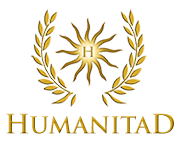


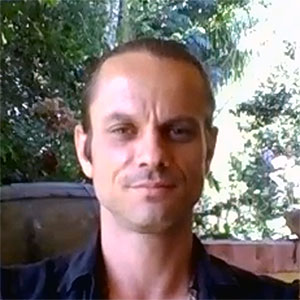
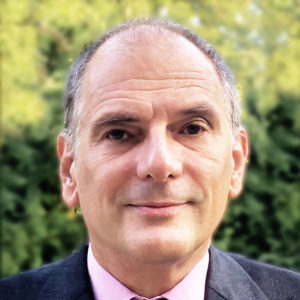 Jacques Bauer is a Clinical Pharmacist, specialised in environmental health. He worked for a couple of years in the pharmaceutical industry as Clinical Research Associate on both Immune System and Central Nervous System. Because of his interest in the immune system, Jacques specialized in nutritional immunology, psycho-neuro-immunology, quantum biology and the impact of electromagnetic waves on the immune system. Jacques works in two major integrative medicine centers: in the Colombier Prevention and Health Center, Switzerland and the Institute for Alternative Care and Holistic Therapies, Belgium. He worked as an ambassador for a Swiss research group, which is collaborating with universities in 3 countries to convert harmful frequencies into a revitalization field favorable for the human body. In 2019 Jacques joined the Humanitad Foundation, in order to bring his knowledge for research and development to the 5G BioShield project.
Jacques Bauer is a Clinical Pharmacist, specialised in environmental health. He worked for a couple of years in the pharmaceutical industry as Clinical Research Associate on both Immune System and Central Nervous System. Because of his interest in the immune system, Jacques specialized in nutritional immunology, psycho-neuro-immunology, quantum biology and the impact of electromagnetic waves on the immune system. Jacques works in two major integrative medicine centers: in the Colombier Prevention and Health Center, Switzerland and the Institute for Alternative Care and Holistic Therapies, Belgium. He worked as an ambassador for a Swiss research group, which is collaborating with universities in 3 countries to convert harmful frequencies into a revitalization field favorable for the human body. In 2019 Jacques joined the Humanitad Foundation, in order to bring his knowledge for research and development to the 5G BioShield project.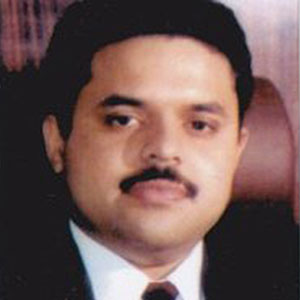

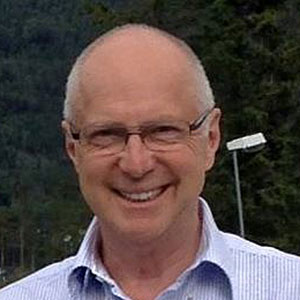

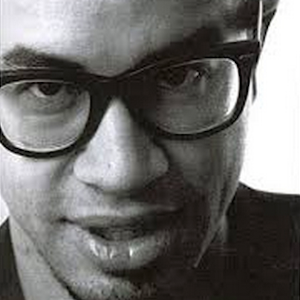 Mr Cleverly was called to the Bar in 1990, and subsequently founded Trafalgar Chambers establishing himself as the youngest head of chambers in the last century. In addition to his legal work, Mr Cleverly is also the Chief Executive Officer of the Made in Africa Foundation, a UK non-profit organisation established to assist the development of the African continent by providing first-stage funding for the feasibility studies and business development of large-scale infrastructure projects based in the region. He is also a regular presenter on TV and radio, and a contributor to newspapers and magazines on subjects regarding Africa and African development.
Mr Cleverly was called to the Bar in 1990, and subsequently founded Trafalgar Chambers establishing himself as the youngest head of chambers in the last century. In addition to his legal work, Mr Cleverly is also the Chief Executive Officer of the Made in Africa Foundation, a UK non-profit organisation established to assist the development of the African continent by providing first-stage funding for the feasibility studies and business development of large-scale infrastructure projects based in the region. He is also a regular presenter on TV and radio, and a contributor to newspapers and magazines on subjects regarding Africa and African development.
 Robin DiMaggio (born 1971) is a drummer and classical/world percussionist based out of Los Angeles. He has performed/recorded with artists as diverse as Steve Vai, Paul Simon, Diana Ross, and Dr. Dre. He has also worked as a producer/songwriter and a composer/arranger, and produced the albums Road to Forever (2012) by Don Felder of The Eagles and Be Here Then (2014) by Stephen Bishop.
Robin DiMaggio (born 1971) is a drummer and classical/world percussionist based out of Los Angeles. He has performed/recorded with artists as diverse as Steve Vai, Paul Simon, Diana Ross, and Dr. Dre. He has also worked as a producer/songwriter and a composer/arranger, and produced the albums Road to Forever (2012) by Don Felder of The Eagles and Be Here Then (2014) by Stephen Bishop. Armand Assante has distinguished himself as one of the most elusive and yet prolific Actors of his generation. Internationally he is sought in the Film sector as much as he has been the guest of leading industrialists and leaders around the world.
Armand Assante has distinguished himself as one of the most elusive and yet prolific Actors of his generation. Internationally he is sought in the Film sector as much as he has been the guest of leading industrialists and leaders around the world.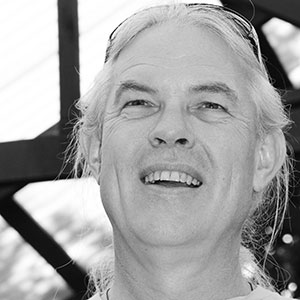 Thomas Joseph Brown is an independent researcher in spiritual science and metaphysics. Just another human questioning reality and our place in it. His main interest is comprehending the archetypal structures of metaphysical and scientific systems of both Occident and Orient seeking common forms and functions, one’s ever-evolving spiritual proprioception in the midst of the matrix.
Thomas Joseph Brown is an independent researcher in spiritual science and metaphysics. Just another human questioning reality and our place in it. His main interest is comprehending the archetypal structures of metaphysical and scientific systems of both Occident and Orient seeking common forms and functions, one’s ever-evolving spiritual proprioception in the midst of the matrix.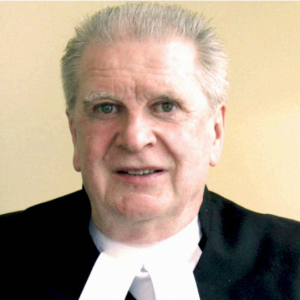 As the first Chief Justice of the International Tribunal for Natural Justice (ITNJ), Sir John Walsh of Brannagh is determined to ensure that the Statute of the ITNJ is followed and that the principles of the Free Access to Courts Act 1400 enacted during the reign of Henry IV are followed, videlicet- “Every person shall be in peace. All his liege people and subjects may freely and peaceably, in his sure and quiet protection, go and come to his courts, to pursue the laws, or defend the same, without disturbance or impediment of any. Full justice shall be done. Full justice and right be done, as well to the poor as to the rich, in his courts aforesaid”
As the first Chief Justice of the International Tribunal for Natural Justice (ITNJ), Sir John Walsh of Brannagh is determined to ensure that the Statute of the ITNJ is followed and that the principles of the Free Access to Courts Act 1400 enacted during the reign of Henry IV are followed, videlicet- “Every person shall be in peace. All his liege people and subjects may freely and peaceably, in his sure and quiet protection, go and come to his courts, to pursue the laws, or defend the same, without disturbance or impediment of any. Full justice shall be done. Full justice and right be done, as well to the poor as to the rich, in his courts aforesaid”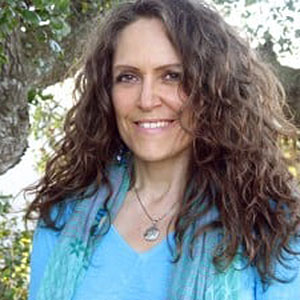 Andrea Jacques served as Editor in Chief of both her high school and college literary magazines. She was graduated Summa Cum Laude with a Bachelor of Arts degree in English Literature.
Andrea Jacques served as Editor in Chief of both her high school and college literary magazines. She was graduated Summa Cum Laude with a Bachelor of Arts degree in English Literature.
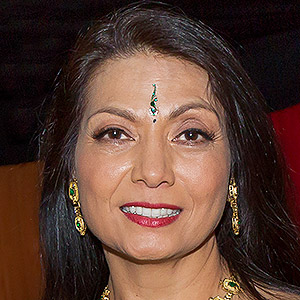

 After serving in the Georgia Legislature, in 1992, McKinney won a seat in the U.S. House of Representatives. She was the first African-American woman from Georgia in the U.S. Congress. She was the first Member of Congress to demand an investigation of the events of 9/11/2001. McKinney was criticized and as a result, she was defeated in 2002; however, she ran again and was re-elected in 2004.
After serving in the Georgia Legislature, in 1992, McKinney won a seat in the U.S. House of Representatives. She was the first African-American woman from Georgia in the U.S. Congress. She was the first Member of Congress to demand an investigation of the events of 9/11/2001. McKinney was criticized and as a result, she was defeated in 2002; however, she ran again and was re-elected in 2004. Jen Clements graduated cum laude with a Bachelor of Laws from the University of Cape Town in 2007 and was admitted to the High Court of South Africa in 2010.
Jen Clements graduated cum laude with a Bachelor of Laws from the University of Cape Town in 2007 and was admitted to the High Court of South Africa in 2010.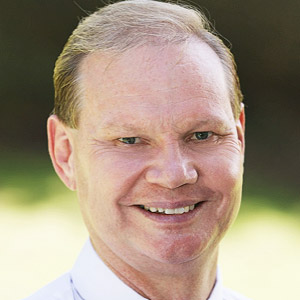 Born and educated in NSW Australia, Brian has acquired a PhD in Pastoral Psychology and has an enriched history in Humanitarian Service, helping people from a pastoral care perspective while serving as a member with the International Tribunal of Natural Justice. He is a reformer of the law and a human rights advocate with an interest in upholding our Constitutional Law and heritage. Brian has served with the defence force and the Ambulance Service and has a real genuine heart for people. As a Pastor and counsellor, and having worked with families and communities Brian is aware that relationships provide the key experience that connects the personal and social world of families. Brian has seen the effects of community health issues, crime and government initiatives that have and haven’t worked and is passionate about change for the better not only in our Communities and Nation but at a Global level.
Born and educated in NSW Australia, Brian has acquired a PhD in Pastoral Psychology and has an enriched history in Humanitarian Service, helping people from a pastoral care perspective while serving as a member with the International Tribunal of Natural Justice. He is a reformer of the law and a human rights advocate with an interest in upholding our Constitutional Law and heritage. Brian has served with the defence force and the Ambulance Service and has a real genuine heart for people. As a Pastor and counsellor, and having worked with families and communities Brian is aware that relationships provide the key experience that connects the personal and social world of families. Brian has seen the effects of community health issues, crime and government initiatives that have and haven’t worked and is passionate about change for the better not only in our Communities and Nation but at a Global level.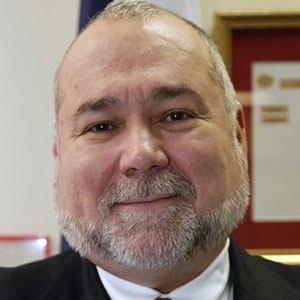
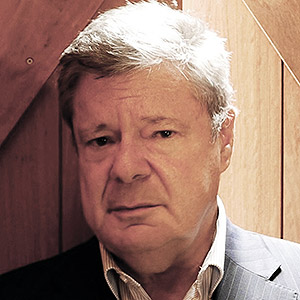 Tim Watson-Munro is a Forensic Psychologist who has worked extensively in prisons and in private practice. Though having assessed in excess of 30,000 people, he is perhaps best known for some of the high profile clients he has been asked to write reports on. These include Alan Bond and the Hoddle Street Killer, Julian Knight. More recently he provided an assessment of Faheem Lodhi – first person to be convicted under recent terrorism laws in Australia. He has held a number of academic appointments at various Universities and frequently gives media interviews or lectures about his work.
Tim Watson-Munro is a Forensic Psychologist who has worked extensively in prisons and in private practice. Though having assessed in excess of 30,000 people, he is perhaps best known for some of the high profile clients he has been asked to write reports on. These include Alan Bond and the Hoddle Street Killer, Julian Knight. More recently he provided an assessment of Faheem Lodhi – first person to be convicted under recent terrorism laws in Australia. He has held a number of academic appointments at various Universities and frequently gives media interviews or lectures about his work.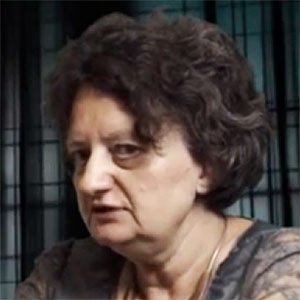
 Matt Belair is the host of the Matt Belair Podcast a top-rated show on consciousness and spirituality. He is a thought leader, personal-development expert, and author of the best selling book Zen Athlete. Matt also has an extensive marketing background with experience in social media and crowdfunding. Matt is committed to exploring his own abilities, researching consciousness and spirituality as well as doing his part to architect a better planet for all of humanity.
Matt Belair is the host of the Matt Belair Podcast a top-rated show on consciousness and spirituality. He is a thought leader, personal-development expert, and author of the best selling book Zen Athlete. Matt also has an extensive marketing background with experience in social media and crowdfunding. Matt is committed to exploring his own abilities, researching consciousness and spirituality as well as doing his part to architect a better planet for all of humanity.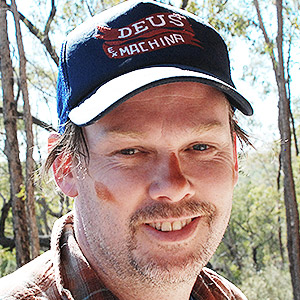
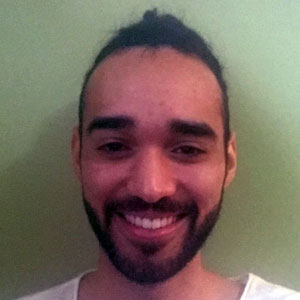 Ryan Boyd is currently living in Toronto, Canada. He is a Reiki master, spiritual counselor, and content creator for Spirit Science and Divine Society. Ryan also acts as editorial gatekeeper on the NewEarth Media portal, providing quality content to NewEarth and NE University as a content editor.
Ryan Boyd is currently living in Toronto, Canada. He is a Reiki master, spiritual counselor, and content creator for Spirit Science and Divine Society. Ryan also acts as editorial gatekeeper on the NewEarth Media portal, providing quality content to NewEarth and NE University as a content editor. Michael Rice is an award-winning bio-architect. He studied at the School of Architecture in University College Dublin, setting up his own Architecture practice in 1998 based in the Slieve Bloom Mountains in the heartland of Ireland, specializing in bio-architecture, sacred geometry, natural design and sustainable living.
Michael Rice is an award-winning bio-architect. He studied at the School of Architecture in University College Dublin, setting up his own Architecture practice in 1998 based in the Slieve Bloom Mountains in the heartland of Ireland, specializing in bio-architecture, sacred geometry, natural design and sustainable living.
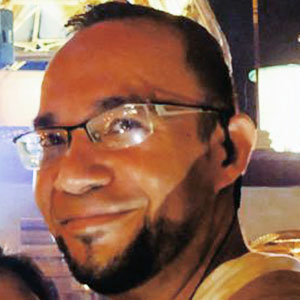 Robin’s bio coming soon
Robin’s bio coming soon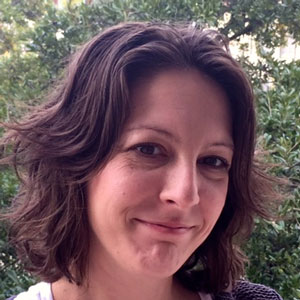


 Warren’s bio coming soon
Warren’s bio coming soon
 To Our International Leaders
To Our International Leaders
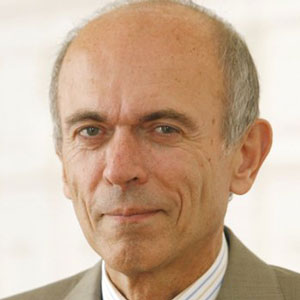 President of Yugoslavia (1989-1990), Prime Minister of Slovenia (1992-2002) and President of Slovenia (2002-2007).
President of Yugoslavia (1989-1990), Prime Minister of Slovenia (1992-2002) and President of Slovenia (2002-2007). In 2009 Archbishop Desmond Tutu was invited by Humanitad to New York to receive an MDG Award on the floor of the general Assembly Hall. He gave a rousing speech and concluded his acceptance by explaining to the Assembly the meaning of the word ‘Ubuntu’. This meme has subsequently entered the planetary conversation as we move toward a more conscious and sustainable civilisational model. Tutu serenaded the audience with an impromptu rendition of ‘Sentimental Journey’.
In 2009 Archbishop Desmond Tutu was invited by Humanitad to New York to receive an MDG Award on the floor of the general Assembly Hall. He gave a rousing speech and concluded his acceptance by explaining to the Assembly the meaning of the word ‘Ubuntu’. This meme has subsequently entered the planetary conversation as we move toward a more conscious and sustainable civilisational model. Tutu serenaded the audience with an impromptu rendition of ‘Sentimental Journey’. Sir Arthur Charles Clarke, CBE, FRAS (16 December 1917 – 19 March 2008) was a British science fiction writer, science writer and futurist, inventor, undersea explorer, and television series host.
Sir Arthur Charles Clarke, CBE, FRAS (16 December 1917 – 19 March 2008) was a British science fiction writer, science writer and futurist, inventor, undersea explorer, and television series host.